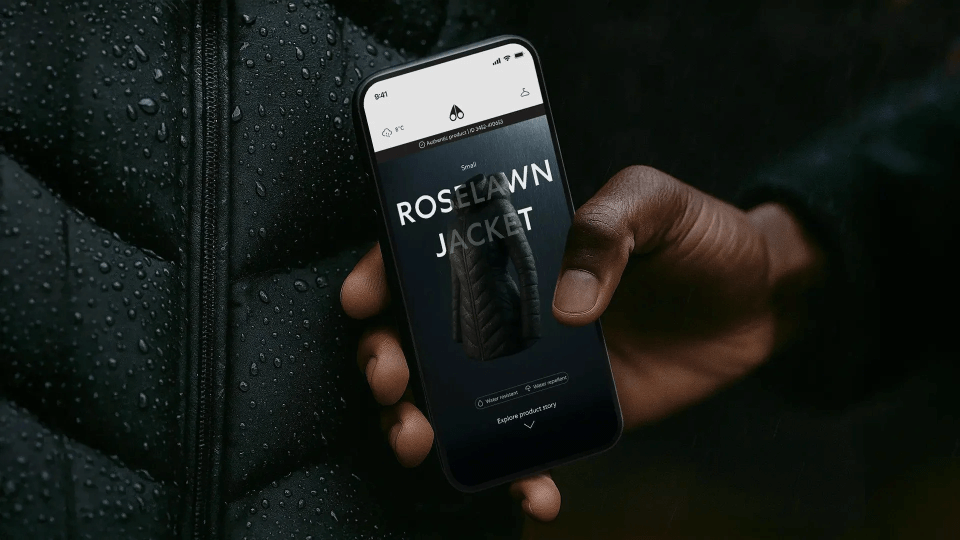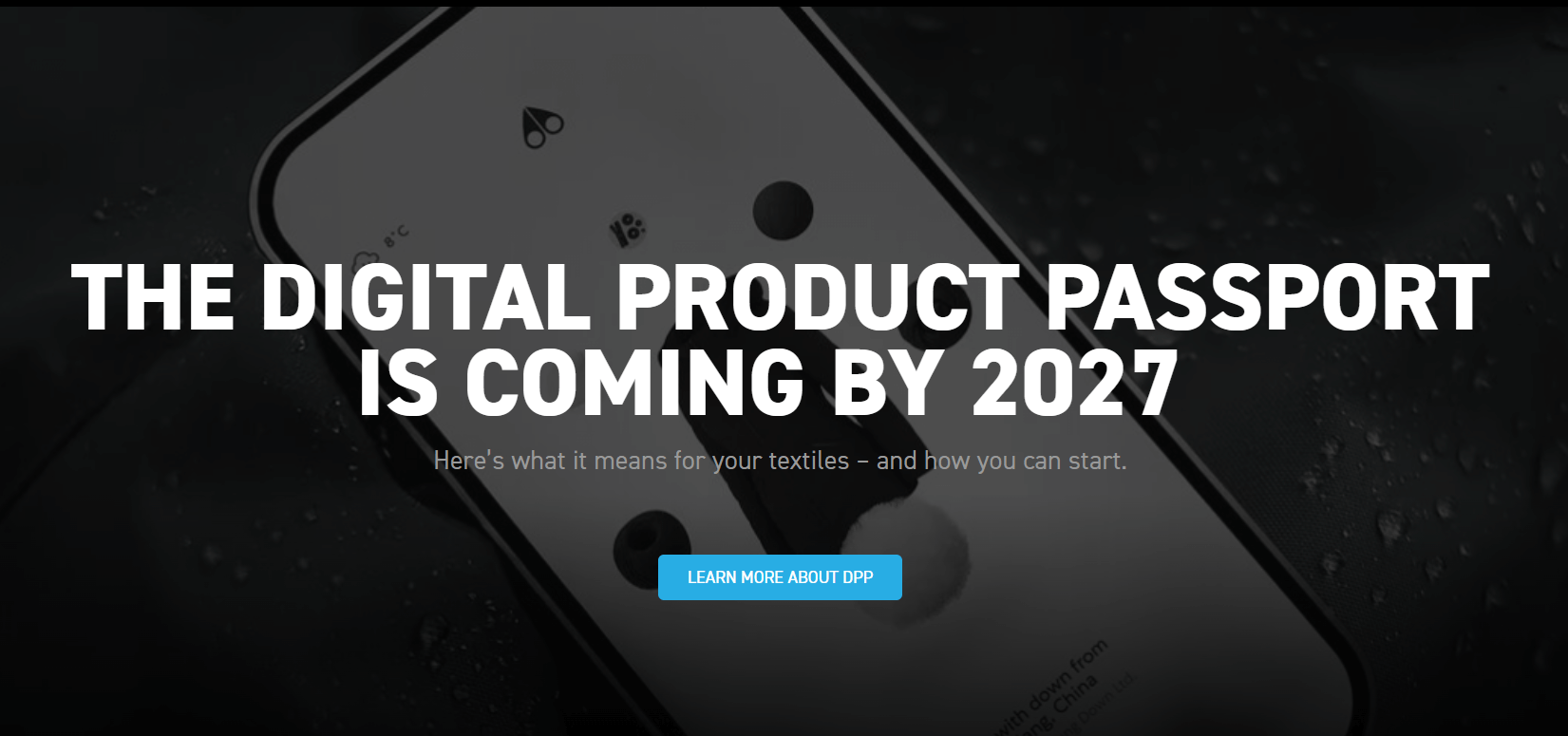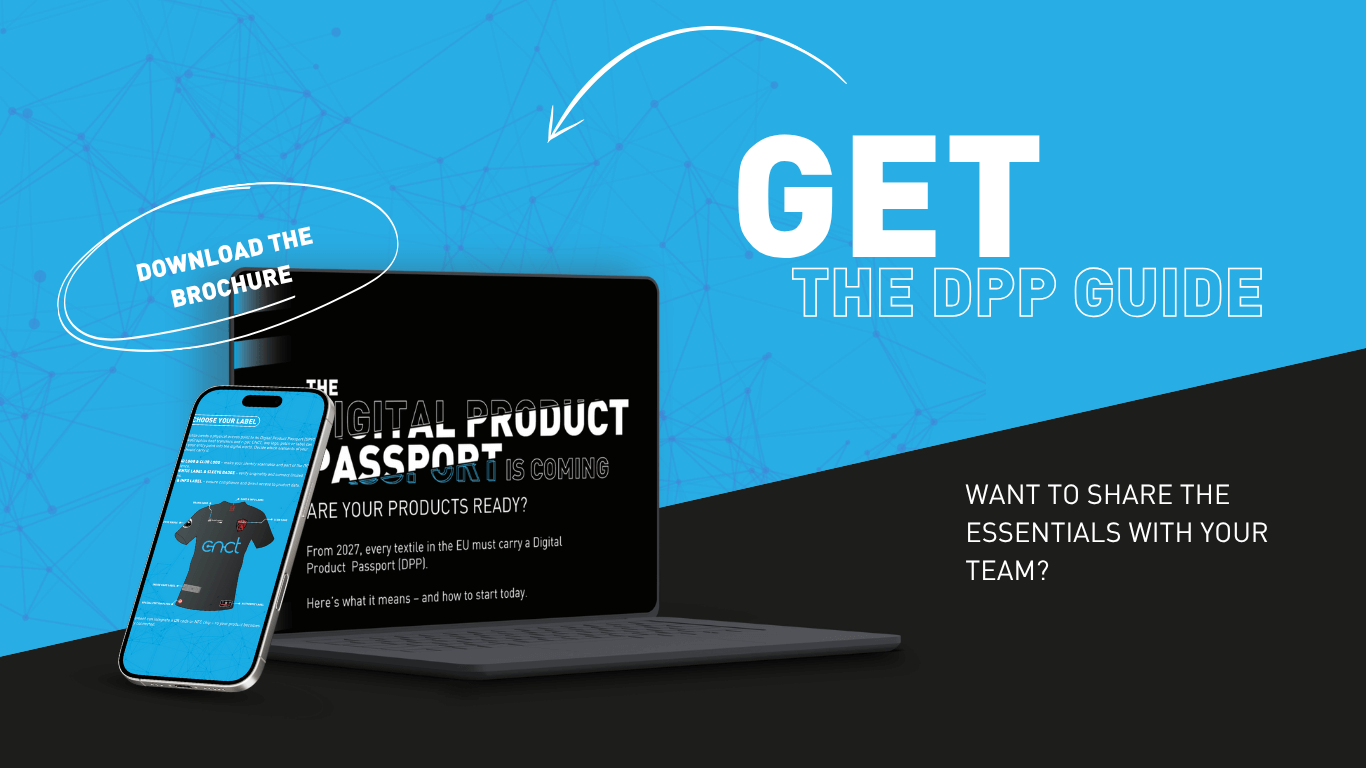The Digital Product Passport (DPP) is coming, and many brands are not sure where to begin. In this article, you’ll learn how to take the first steps and what really helps along the way.
“I honestly don’t know where to start.”
We hear this sentence a lot these days.
The EU is serious: starting in 2027, the Digital Product Passport (DPP) will be mandatory for textiles. And yet, many brands, manufacturers, and clubs are still asking themselves:
How is this supposed to work? Where do we even begin?
If that sounds familiar, you’re not alone.
The DPP can seem like a huge topic full of technology, data, and regulations. But no one needs to know everything right away. What matters most is simply taking the first step.
Why now is the right time to start

Many are waiting until the final EU guidelines are published. But now is actually the best time to start preparing.
Why?
- Because right now you can test, plan, and learn without pressure.
- Because you can gain experience that will save time and money later.
- And because you can identify internal gaps early and adjust before it’s urgent.
In short: the DPP is not a task for tomorrow, it’s an opportunity for today. Those who start early can shape how transparency, sustainability, and digital product communication become part of their brand, instead of being forced to adapt later.
The most common mistake: thinking too big
Many believe they need to build a complete system right away, with data connections, cloud solutions, and product digitization across all collections. That almost always leads to overwhelm.
In reality, the DPP journey starts much smaller.
A realistic first step might look like this:
- Choose a pilot product: A jersey, a hoodie, or a small collection is enough to understand how things connect.
- Gather essential data: Material, origin, CO₂, care — that’s enough for the beginning.
- Create digital access: For example, via a QR code or NFC chip embedded in your label or heat transfer.
- Test, learn, adapt: Then roll out step by step to other products.
This way, the DPP stops being an abstract regulation and becomes a tangible, achievable project.
Your starting point: Our DPP information page

If you’re wondering where to begin, our DPP information page is the best place to start. It gives you everything you need to understand the Digital Product Passport — clearly explained, without technical jargon.
Here’s what you’ll find there:
- a clear timeline leading up to the 2027 DPP requirement,
- a checklist to evaluate your current status,
- FAQ answers to the most common real-world questions,
- and live examples of how the DPP is already being implemented today.
Whether you’re just getting started or already planning pilot projects, this page will help you find direction and understand how to make your product DPP-ready.
➡️ Explore the page: Everything about the Digital Product Passport
Prefer something compact? Download our DPP Guide (PDF)

If you prefer to have the key information in one document, for internal use or team discussions, we’ve created the DPP Guide together with r-pac CNCT.
The guide summarizes the essentials, the EU timeline, and the first practical steps. It’s your handy companion when you want a quick overview.
➡️ Download the free guide: The Digital Product Passport – A Guide by dekoGraphics & r-pac CNCT (PDF)
You don’t have to do it alone

The DPP touches many areas, from design and production data to labeling and customer communication. No company needs to figure it out on its own.
With dekoGraphics and r-pac CNCT, you have two partners who connect the physical and digital worlds:
- We integrate QR or NFC technology directly into your heat transfers or labels.
- r-pac CNCT provides the secure, global data infrastructure behind it.
The result: Your textile branding becomes a digital access point without changing your production process. And you don’t just meet EU requirements, you add measurable value for your brand and your customers.
Frequently asked questions about getting started with the DPP

When will the Digital Product Passport become mandatory for textiles? From 2027, the DPP will be mandatory for all textiles sold in the EU. Pilot projects are already underway, and final regulations are expected in 2026.
Should I already start implementation now? Yes — early starters can adjust their processes, build partner networks, and test first products in time. That saves stress, time, and costs later.
How can I technically implement the DPP? Access to the DPP happens via a QR code or NFC chip — for example, integrated directly into your heat transfer or label. Your design stays untouched, and the data is instantly accessible.
What do I need to get started? You don’t need a full system from day one. Choose a pilot product, collect key data (materials, origin, care), and decide whether QR or NFC fits better. The rest we’ll develop together, step by step.
Why work with dekoGraphics and r-pac CNCT? You get a complete solution: smart branding technology, digital data management, global implementation, and personal guidance — all in one. This makes your product not only compliant but future-ready.

Conclusion: You don’t need to know everything — you just need to start
The Digital Product Passport can seem complex at first and that’s okay. With the right structure and partners, it becomes a clear, manageable process and a real opportunity to make your products more transparent, sustainable, and valuable.
The most important step is the first one. And you can take it today.
We’ll guide you through it — with experience, technology, and solutions that work.
TRUSTED BY









